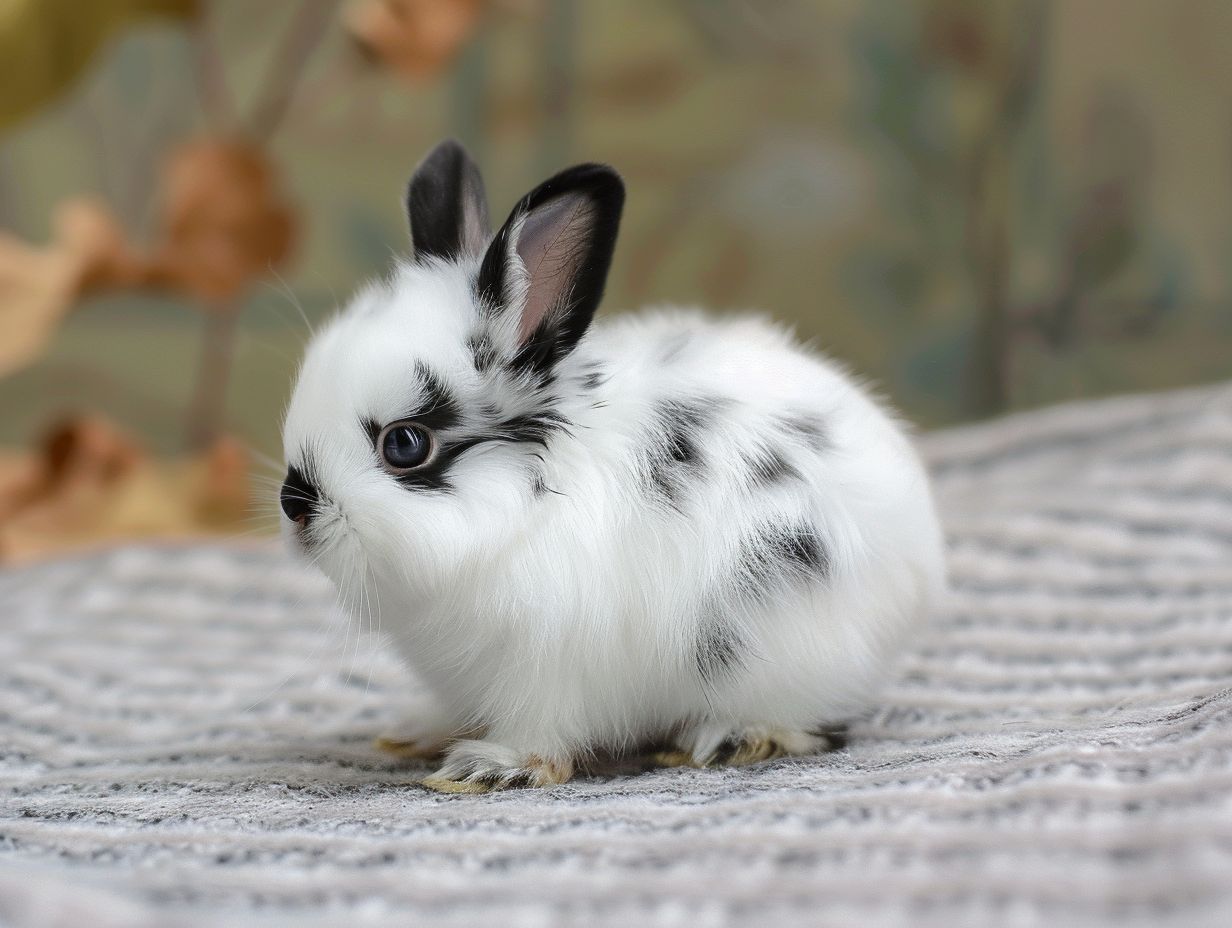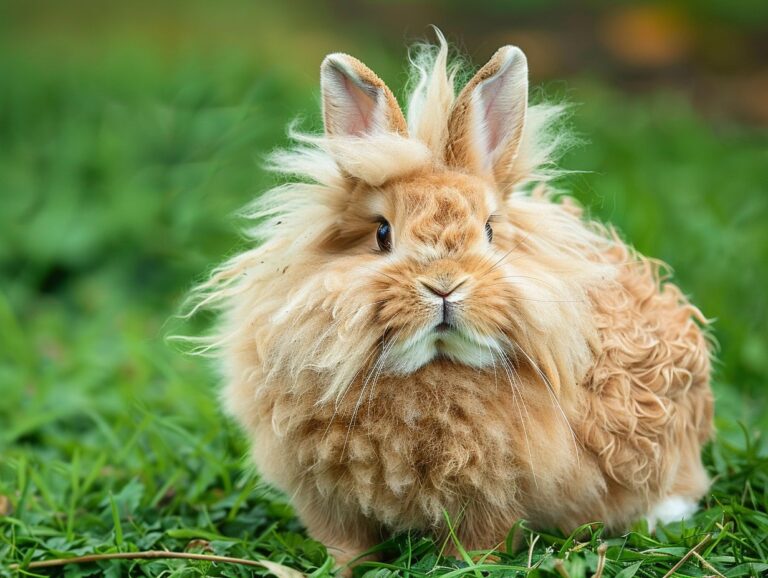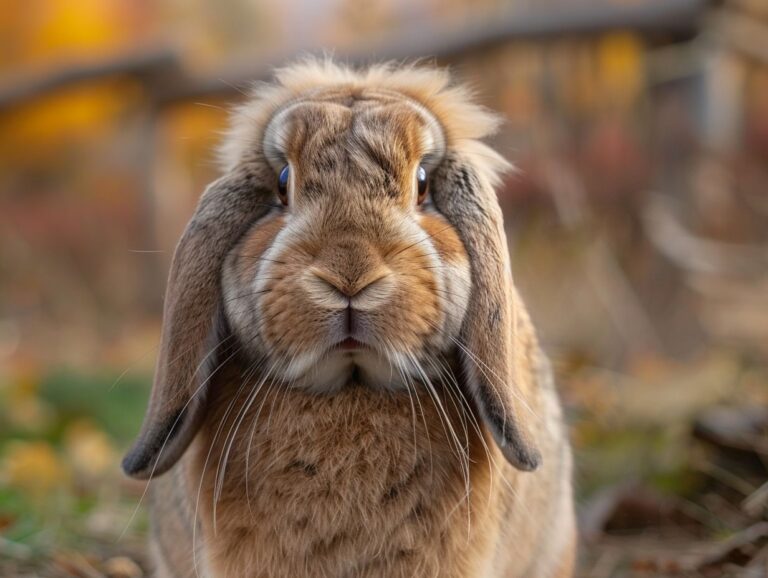Dward Hotot Rabbit Breed: Characteristics, Care, History, and Breeding Practices
Are you curious about the adorable Dwarf Hotot rabbit breed? In this comprehensive article, we will explore everything you need to know about these charming little rabbits. From their physical characteristics and history to care requirements and common health issues, we will cover it all. Whether you’re a seasoned rabbit owner or considering adding a Dwarf Hotot to your family, this article will provide valuable insights into their diet, grooming needs, housing requirements, breeding practices, and average lifespan. Get ready to learn all about these lovable rabbits!
Key Takeaways:
What Is A Dwarf Hotot Rabbit?
Dwarf Hotot rabbits are a unique breed known for their small size, distinctive physical features, and charming personalities. They are recognized by the American Rabbit Breeders Association (ARBA) as a breed with specific characteristics that make them stand out among other rabbit breeds.
One of the most striking features of Dwarf Hotot rabbits is their eye bands, a white circle around each eye that contrasts beautifully with their dark-colored coat. These rabbits typically have a compact body with short, erect ears and a round face, giving them an adorable appearance that captivates many rabbit enthusiasts.
Their coat color is predominantly white, with black, blue, or chocolate eye bands. This color pattern creates a stunning visual effect and enhances their overall charm. In terms of temperament, Dwarf Hotots are known for being friendly, curious, and affectionate companions, making them popular among families and individuals looking for a delightful pet.
What Are The Physical Characteristics Of A Dwarf Hotot Rabbit?
Dwarf Hotot rabbits are small in size, typically weighing between 2 to 3 pounds when fully grown. They have a compact body with a round head, short ears, and a plush coat that comes in various colors, including white with distinct black eye bands encircling each eye.
Their petite size and round features make them adorable companions for both families and individuals. The soft fur of Dwarf Hotots is dense and velvety to the touch, adding to their charm. These rabbits are known for their unique eye band markings, which are a defining characteristic of the breed. The black eye bands contrast beautifully against their white fur, creating a stunning and captivating look. This distinctive feature sets them apart from other rabbit breeds and adds to their overall appeal.
What Is The History Of The Dwarf Hotot Rabbit Breed?
The history of the Dwarf Hotot rabbit breed traces back to Germany, where breeders sought to develop a rabbit with unique eye bands. The breed originated from the Blanc de Hotot rabbit and was further refined by Elizabeth Forstinger and Eugenie Bernhard. It eventually gained popularity in the United States, particularly in California.
In the early 20th century, Elizabeth Forstinger, known for her dedication to perfecting the breed, focused on enhancing the distinct eye bands that set the Dwarf Hotot rabbit apart. Working alongside Eugenie Bernhard, another prominent breeder, they meticulously selected rabbits with desirable traits to create a standard for the breed. Their efforts led to the breed being officially recognized by the American Rabbit Breeders Association (ARBA) in 1983, signifying a significant milestone in the breed’s journey to widespread recognition.
What Are The Care Requirements For A Dwarf Hotot Rabbit?
Proper care for a Dwarf Hotot rabbit involves providing a balanced diet, regular grooming sessions, monitoring their health, ensuring family compatibility, and considering their hutch setup for comfort.
Dwarf Hotot rabbits are known to thrive on a diet rich in high-quality hay, fresh vegetables, and limited pellets; ensuring nutritional balance is crucial for their overall well-being.
Regular grooming, including brushing their soft fur and checking for any signs of illness, plays a vital role in their care routine.
Regarding health, it’s important to stay alert for any abnormal behavior, diet changes, or irregularities in stool consistency.
What Kind Of Diet Should A Dwarf Hotot Rabbit Have?

Hay is essential for Dwarf Hotot rabbits as it not only aids in their digestion but also helps wear down their teeth, which continually grow. The fiber in hay promotes a healthy gut and prevents gastrointestinal issues.
Pellets, on the other hand, provide necessary vitamins and minerals that may be lacking in hay. Pellets should only make up a small portion of the overall diet to avoid obesity.
Access to clean, fresh water is crucial to prevent dehydration and ensure optimal kidney function.
How Often Should A Dwarf Hotot Rabbit Be Groomed?
Dwarf Hotot rabbits should be groomed regularly to maintain their coat’s health and prevent matting. Brushing them a few times a week helps control shedding and keeps their fur in good condition. Use appropriate grooming tools designed for rabbits to ensure gentle and effective grooming sessions.
Aside from brushing, it’s crucial to also check their nails regularly and trim them when needed to prevent overgrowth. This is particularly important for Dwarf Hotot rabbits, as their small size can make excessive nail growth more uncomfortable. Trimming should be done carefully to avoid cutting the quick.
Regular
- brushing
- nail trimming
ensures your furry friend stays clean and healthy.
What Type Of Housing Is Suitable For A Dwarf Hotot Rabbit?
A suitable housing option for Dwarf Hotot rabbits includes a spacious hutch equipped with cozy bedding and adequate ventilation. Whether kept indoors or in an outdoor cage hutch, it’s essential to provide a safe and comfortable environment that meets the rabbit’s need for space and security.
Indoor housing for Dwarf Hotots should offer a quiet escape from daily household activities, with minimal exposure to loud noises and other pets that may cause stress.
Proper bedding materials, such as hay or straw, are crucial for maintaining their health and comfort.
A well-ventilated space helps regulate temperature and prevent respiratory issues. Outdoor enclosures should feature sturdy materials that protect against predators and harsh weather conditions, along with ample shade and shelter to prevent overheating or exposure to extreme temperatures.
What Are The Common Health Issues For A Dwarf Hotot Rabbit?
Like any other rabbit breed, Dwarf Hotot rabbits are susceptible to various health issues, including woolblock, malocclusion, GI stasis, and ear mites. Regular vet checkups are essential to monitor their health and address any potential concerns promptly.
Woolblock, a condition where a rabbit ingests too much fur leading to intestinal blockages, can be prevented by providing sufficient hay and grooming to reduce shedding.
Malocclusion, which refers to misalignment of teeth, may require dental trims by a veterinarian to prevent issues with eating and overall health.
GI stasis, a serious condition affecting a rabbit’s digestive system, can be managed by feeding a high-fiber diet and ensuring adequate hydration.
Ear mites are common parasites that can infect a rabbit’s ears, leading to discomfort and irritation.
By staying vigilant and incorporating preventive care measures, such as proper diet, adequate exercise, and regular vet visits, Dwarf Hotot rabbit owners can help their furry companions lead healthy and fulfilling lives.
What Are The Signs Of Illness In A Dwarf Hotot Rabbit?
Recognizing the signs of illness in a Dwarf Hotot rabbit is crucial for prompt intervention and treatment. Common symptoms include changes in appetite, lethargy, unusual behavior, and physical abnormalities. Seeking veterinary care at the first sign of illness is vital for the rabbit’s well-being.
Changes in appetite are one of the primary indicators that something may be amiss with your furry friend. A rabbit that suddenly loses interest in food or water could be signaling an underlying health issue.
Alterations in behavior are also key. Lethargy, restlessness, or a lack of usual curiosity could all point to a problem.
Physically, pay attention to your rabbit’s coat, eyes, and stool consistency. Any unusual physical abnormalities should be examined by a vet promptly to prevent further complications.
What Are The Preventative Measures For Common Health Issues In Dwarf Hotot Rabbits?

Regular grooming is crucial for Dwarf Hotot rabbits since it helps in maintaining their fur quality and prevents matting, which can lead to skin issues.
A balanced diet rich in hay, fresh vegetables, and a controlled amount of pellets is vital for their digestive health and overall well-being.
Providing opportunities for exercise, such as a large enough enclosure or supervised playtime, aids in preventing obesity and promotes their mental stimulation and physical health.
Regular veterinary checkups are necessary to catch any potential health concerns early and ensure timely treatment, contributing to a longer and healthier life for these adorable rabbits.
How To Breed Dwarf Hotot Rabbits?
Breeding Dwarf Hotot rabbits requires careful planning and adherence to best practices to ensure the health and quality of the offspring.
Understanding the ideal breeding age is crucial for Dwarf Hotot rabbits. Typically, female Dwarf Hotots reach sexual maturity around 5-6 months, while males are ready for breeding between 4-5 months of age. It is important to wait until they are at least 6 months old before the first breeding to ensure they are physically mature.
Implementing proper breeding practices involves selecting healthy, genetically diverse parents to produce strong and robust offspring. Careful monitoring of the breeding process, providing a balanced diet, and ensuring a stress-free environment are also key aspects of responsible breeding.
Considerations such as genetic health, temperament, and conformation should be evaluated when choosing breeding pairs. Prioritizing quality over quantity and maintaining high standards throughout the breeding process can help preserve the integrity of the Dwarf Hotot rabbit breed.
What Is The Ideal Breeding Age For A Dwarf Hotot Rabbit?
Determining the ideal breeding age for a Dwarf Hotot rabbit involves considering factors such as maturity, reproductive health, and overall well-being. Most breeders recommend waiting until the rabbit reaches a certain age and shows signs of readiness before initiating the breeding process.
Reproductive maturity plays a crucial role in successful breeding.
- Female Dwarf Hotot rabbits typically reach sexual maturity around 4-6 months, whereas males may be ready as early as 3-5 months.
- It is important to note that reaching sexual maturity does not necessarily mean they are mentally or physically prepared for breeding.
Assessing the rabbit’s health, including weight, body condition, and any potential genetic issues, is essential before breeding to avoid complications and ensure the well-being of both the rabbits and their offspring.
What Are The Breeding Practices For Dwarf Hotot Rabbits?
Implementing proper breeding practices is essential for maintaining the health and genetic diversity of Dwarf Hotot rabbits. From selecting suitable mates to managing pregnancy and caring for offspring, following established breeding practices ensures the production of healthy and well-bred rabbits.
Regarding mate selection for Dwarf Hotot rabbits, breeders should prioritize compatibility in terms of physical health, temperament, and genetic background. It is crucial to avoid inbreeding and strive for maximum genetic diversity to minimize the risk of hereditary diseases and promote overall robustness in the population.
During pregnancy management, providing a stress-free environment, a balanced diet, and regular vet check-ups are key factors for ensuring the mother’s and unborn kits’ well-being. Monitoring weight gain and behavior changes can help detect any issues early on.
After the birth of the young ones, offspring care demands attention to detail. Adequate nutrition, proper nesting materials, and socialization are vital for the healthy development of the baby rabbits. It is essential to be prepared for potential complications and seek professional guidance when needed.
What Are The Considerations For Breeding Dwarf Hotot Rabbits?
Before embarking on the breeding journey with Dwarf Hotot rabbits, breeders must carefully consider various factors, including genetics, health screenings, and the compatibility of breeding pairs. Understanding these critical considerations is vital for ensuring successful breeding outcomes and maintaining the breed’s quality.
When diving into the genetics of Dwarf Hotots, breeders need to grasp the complexities of color inheritance, coat patterns, and potential genetic predispositions to certain health issues. Conducting thorough health assessments is paramount to identify any hereditary conditions that may impact future generations.
Evaluating the temperament and physical traits of potential mating partners can significantly influence the health and vitality of offspring. Ensuring mate compatibility not only enhances litter quality but also promotes the well-being of the breeding rabbits throughout the process.
What Is The Average Lifespan Of A Dwarf Hotot Rabbit?

Quality care plays a crucial role in the health and longevity of Dwarf Hotot rabbits. Ensuring they have a spacious and clean living environment, regular grooming sessions, and mental stimulation are essential for their well-being.
Proper diet is another key aspect that directly impacts a rabbit’s lifespan. A balanced diet rich in hay, fresh vegetables, and limited pellets is essential for their overall health. Additionally, regular exercise is vital to keeping Dwarf Hotot rabbits active and maintaining their weight within healthy limits.
Frequently Asked Questions
What are the key characteristics of the Dward Hotot Rabbit breed?
The Dward Hotot Rabbit breed is known for its small size, weighing only 2-4 pounds, and its distinctive white coat with black eye rings. They also have a compact body shape and a playful, energetic nature.
How should I care for a Dward Hotot Rabbit?
The Dward Hotot Rabbit requires a balanced diet of hay, fresh vegetables, and a small amount of pellets. They also need plenty of exercise and a clean living environment with access to fresh water. Regular grooming is important to maintain their soft coat.
What is the history of the Dward Hotot Rabbit breed?
The Dward Hotot Rabbit is a relatively new breed, originating in Germany in the early 20th century. They were bred from wild rabbits and smaller domestic breeds to create a compact, friendly pet rabbit. They were first recognized by the American Rabbit Breeders Association in 1983.
Are there any specific health concerns for Dward Hotot Rabbits?
Dward Hotot Rabbits are generally hardy and healthy, but they may be prone to dental issues due to their small size and compact jaw structure. Regular check-ups with a veterinarian and providing appropriate chew toys can help prevent dental problems.
Can Dward Hotot Rabbits be used for breeding?
Yes, Dward Hotot Rabbits can be bred for show or as pets. However, it is important to ensure the health and well-being of both the mother and offspring during the breeding process. It is recommended to have a breeder with experience in handling this specific breed.
What are the recommended breeding practices for Dward Hotot Rabbits?
Breeding Dward Hotot Rabbits should only be done with healthy and genetically sound rabbits. It is important to introduce them slowly and carefully monitor their behavior during the breeding process. Proper care and nutrition for the mother and babies are crucial for a successful breeding experience.







